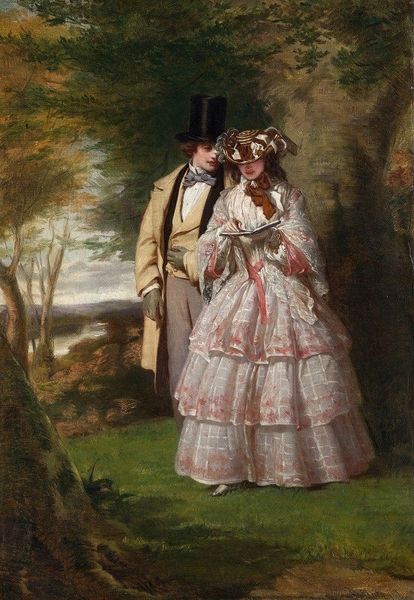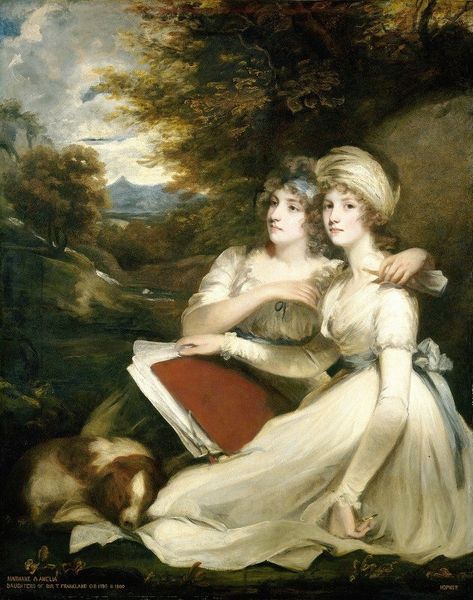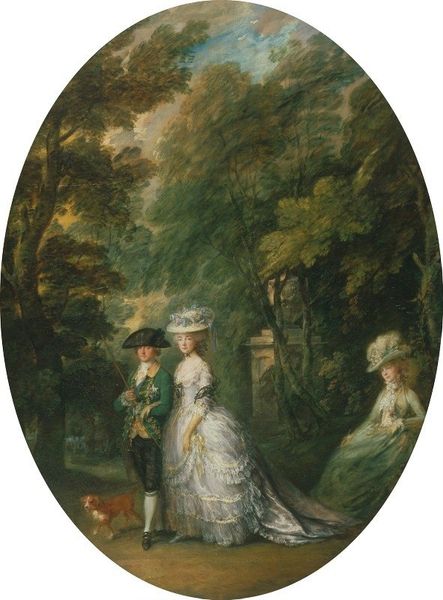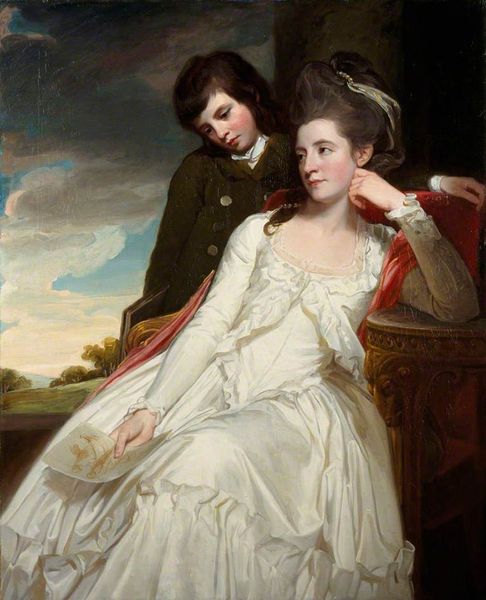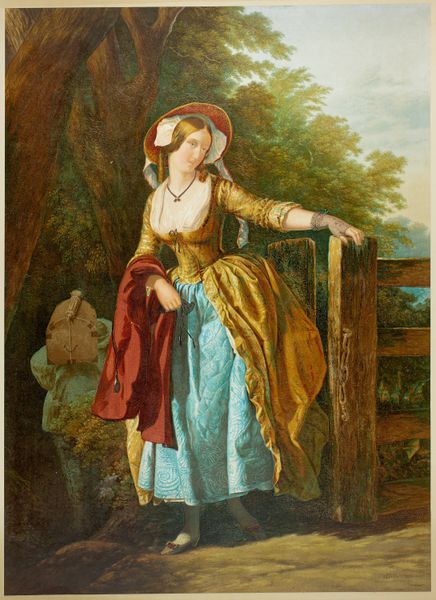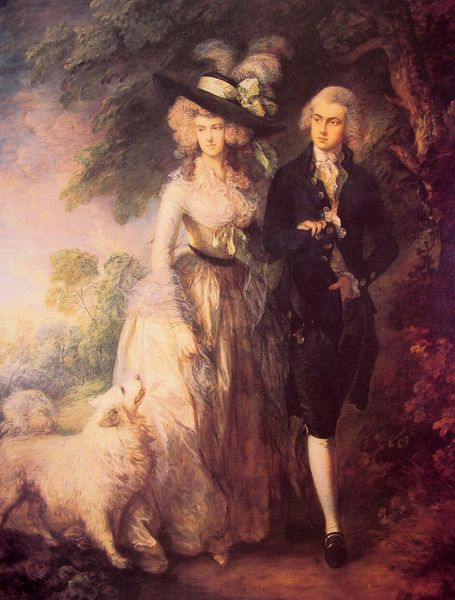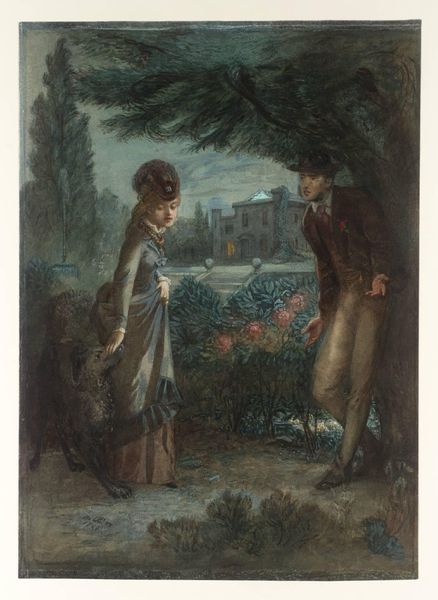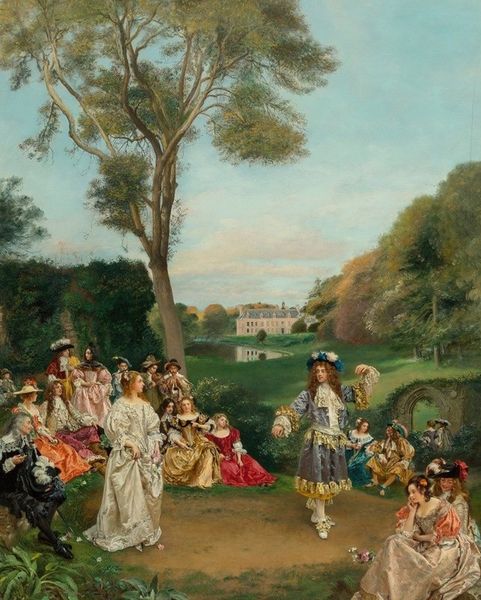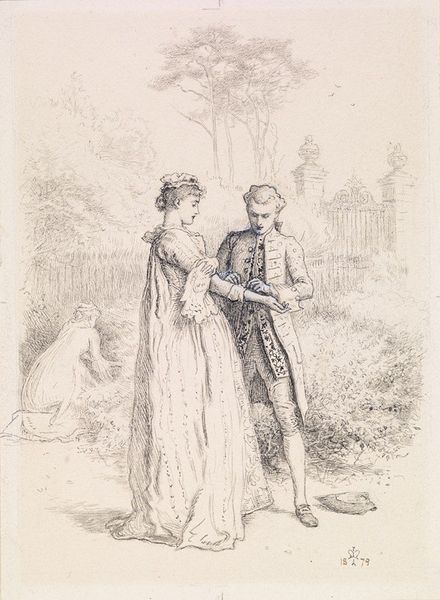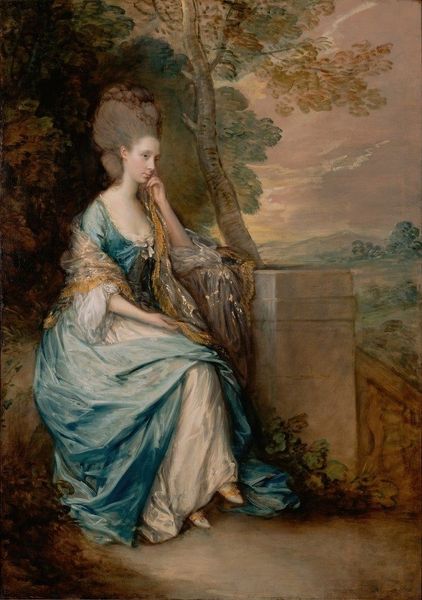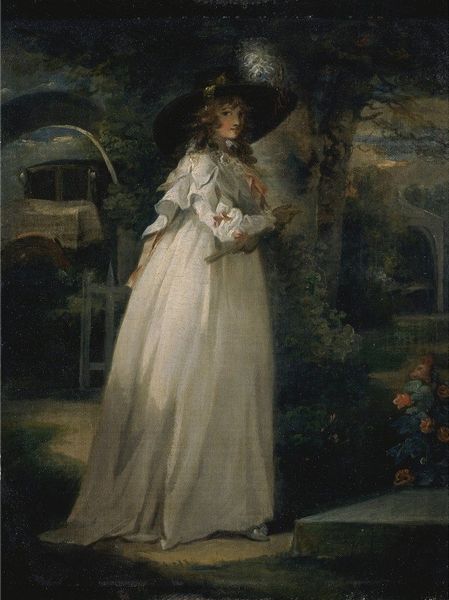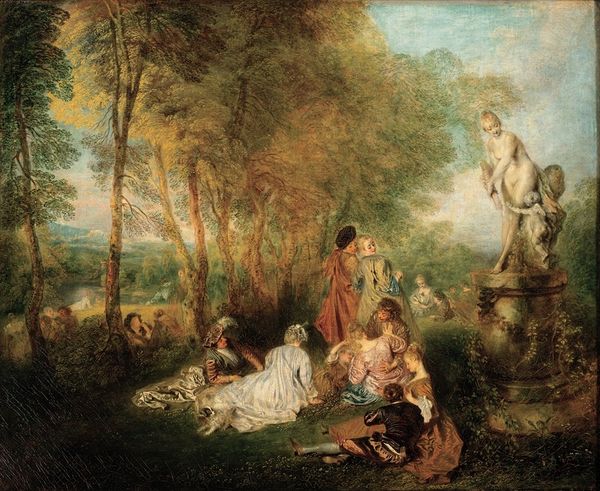
Dimensions: support: 371 x 321 mm
Copyright: CC-BY-NC-ND 4.0 DEED, Photo: Tate
Editor: This is Henry Singleton's "Palemon and Lavinia," a lovely oil on canvas held at the Tate. The figures seem so delicately rendered. I’m curious, what does the making of this piece suggest to you? Curator: It's interesting to consider Singleton's choices in materials and how they reflect the social context of art production at the time. Oil paint allowed for layering and blending, a technique that could elevate a painting to something of high value, which also reflects the sitter’s social standing. Editor: So, the material itself contributes to the perception of value? Curator: Precisely. And consider the labor involved – the grinding of pigments, the preparation of the canvas, the hours of skilled work. All these elements emphasize the commodity status of the artwork itself. Editor: That’s a fascinating way to look at it. I never really considered the economic aspects so deeply. Curator: Thinking about art through its materiality can open up new perspectives. We begin to see art not just as an aesthetic object, but also as a product of labor and social forces.
Comments
tate 6 months ago
⋮
http://www.tate.org.uk/art/artworks/singleton-palemon-and-lavinia-t01926
Join the conversation
Join millions of artists and users on Artera today and experience the ultimate creative platform.
tate 6 months ago
⋮
This painting illustrates a story from James Thomson’s popular poems The Seasons 1726–30. The rural lovers Palemon and Lavinia appear in Thomson’s Autumn; they are adapted from the Biblical story of Ruth and Boaz. Palemon, a gentleman, professes his love for the country girl Lavinia, in a harvest-time setting. Thomson’s sentimental fantasy of rural romance was particularly attractive to a generation brought up on the ideals of Sensibility. Gallery label, September 2004
